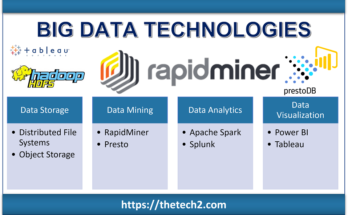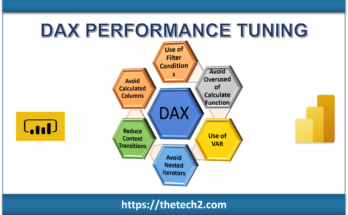A graph database is a type of database that uses graph theory to represent and store data.
As we know, Graph theory is a branch of mathematics that deals with graphs, which are mathematical structures that describe pairwise relationships between objects. A graph comprises vertices (or nodes) and edges that link pairs of vertices.
In this technology, data is represented as nodes and edges, where nodes represent entities (such as people, places, or things) and edges represent the relationships between these entities.

Graph Database
Please find below some characteristics of this technology:
- Purposely built to store and navigate relationships for highly connected applications, like social media apps.
- The nodes represent an entity such as a Person, City, Restaurant, Customer, etc.
- Edges are used to map the relationship between entities.
- Highly efficient in mapping complex relationships, iterating deep hierarchies like finding a friend of friend query ranging 20 to 30 degrees compared to SQL databases which get slower with the increasing number of joins.
- Highly abstract compared to mapping the same relationship as an SQL query, making it easy to test, change and maintain.
When to use a Graph Database
We can use graph databases in the following scenarios:
- Navigate deep hierarchies.
- Your application has complex many-to-many relationships; as the application evolves, new relationships are added.
- You need to analyze interconnected data and relationships.
- Find hidden connections between distant items and discover inter-relationships between items.
Applications of Graph Database
Graph databases have various applications in various fields because they handle complex and highly connected data.
Here are some examples of applications of graph databases:
Social networks
These are used extensively to model social networks, such as Facebook and LinkedIn, where the connections between individuals and organizations can be represented as a graph.
Healthcare
These databases can store and analyze medical records, patient data, and clinical research, making identifying patterns and relationships between health conditions and treatments easier.
Recommendation Engines
Graph databases can build recommendation engines that use connections between different entities to make personalized recommendations, such as movies, music, and products.
Fraud Detection
These databases can identify fraudulent activities by analyzing large amounts of data and detecting patterns and relationships that may not be visible in traditional relational databases.
Knowledge management
Graph databases can be used to store and search large amounts of data in a way that makes it easy to find connections and relationships between different pieces of information.
IoT and sensor networks
Graph databases can store and analyze data from IoT devices and sensor networks, such as traffic sensors, weather stations, and smart home devices.
Logistics and supply chain management
Graph databases can model and optimize logistics and supply chain networks, such as finding the most efficient delivery routes and managing inventory levels.
Implementing Graph Database
There are many options available to implement a Graph database. We will cover popular graph databases, i.e., Neo4j, Azure Cosmos DB, and Transact-SQL Graph processing.
Neo4J
Neo4j is a popular graph database management system (DBMS) that handles large, highly connected datasets. It is an open-source, ACID-compliant DBMS that supports the Cypher query language, a declarative language used to query and manipulate graph data.
Neo4J is used in the finance, healthcare, telecommunication, and e-commerce industries.
- Neo4j is an open-source graph database used by hundreds of Fortune 500 companies and is the world’s leading graph database.
- Neo4j delivers lightning-fast read-and-write performance while protecting your data integrity.
- Cipher Query Language is used in Neo4j for performing any operation.
- ACID compliance to ensure predictability of relationship-based queries.
- Most Prominent and Most Active Graph Community on the Planet.
- It is the only enterprise-strength graph database that combines native graph storage and scalable architecture optimized for speed.
Azure Cosmos DB
Azure Cosmos DB is a multi-model database service provided by Microsoft on its Azure cloud platform. It is a NoSQL database service that supports multiple data models, including graph databases, key-value, document, and column families.
- A fully-managed globally distributed NoSQL database service.
- Azure Cosmos DB provides a graph database service via the Gremlin API on a fully managed database service designed for any scale.
- We can interact with Graph through Gremlin Console in the platform of your choice (Java, Node.js, Python, or dotNET).
- Easy to Integrate if the current infrastructure is on Azure.
You can get more details about graph data on Microsoft Azure.
Transact-SQL Graph Processing
Transact-SQL Graph Processing is a Microsoft SQL Server feature that provides for the modeling and querying of graph data using Transact-SQL (T-SQL), the SQL Server procedural programming language. This feature debuted in SQL Server 2017, and it offers a set of T-SQL extensions that allow developers to work with graph data natively.
Developers can use T-SQL Graph Processing to build and manage graph data using two new T-SQL constructs: nodes and edges. Edges represent the relationships between nodes, while nodes symbolize entities in the graph. T-SQL Graph Processing includes graph-specific query operators such as MATCH, CREATE, DELETE, and UPDATE, allowing developers to query and modify graph data using T-SQL.
T-SQL Graph Processing also supports graph indexes, which are intended to optimize graph queries by traversing the graph efficiently. T-SQL developers can use the build INDEX statement to build and manage graph indexes.
T-SQL Graph Processing is especially helpful for graph-processing-intensive applications such as social networking, recommendation engines, and fraud detection. T-SQL Graph Processing makes it simpler for developers to deal with graph data within their existing database environment by providing a native graph processing feature in SQL Server.
You may be interested in more Big Data topics.


One Comment on “Graph Database | How to Use & Implement Technology”